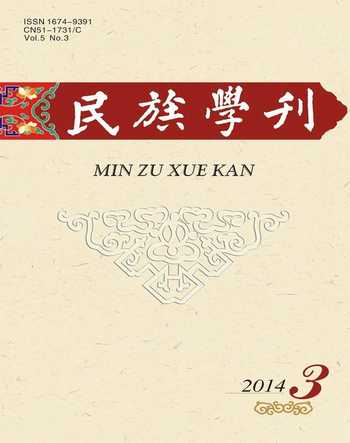An Empirical Analysis of Industrial Agglomeration in the Western Ethnic Region
HE Xionglang ZHANG Huiyin
Abstract:Industrial agglomeration refers to a high concentration of the same industry or related industries in a particular geographic area, and a process of gradual concentration of industrial capital elements within a space. The new economic geography considers that industrial agglomeration is caused by circulating cumulative cause and effect. Accidental disturbance destroys the original balance of the symmetrical area, which in turn brings about the expansion of the market in a concentrated industrial area, which then causes the effect of market expansion. This, accordingly, induces the factors of production to begin to concentrate in the area. The concentration of elements and industries brings about the “regional price index effect”. The concentration of manufacturers in the region is helpful in reducing both transportation costs and living costs of the labor. Accordingly, the elements become further concentrated, which causes the expansion of market scale and the concentration of elements. Finally, a kind of industrial agglomeration forms. Industrial agglomeration is not only a kind of group concentration of similar enterprises in a specific region, but most importantly it is a kind of common growth among the enterprises. Therefore, the degree of concentration of an industry reflects the competiveness of an industry, which in turn reflects the economic strength of a region or a country. The concept that industrial concentration could promote the relative competiveness of the industries in the region has already been accepted by most economists. Hence, it has an important meaning regarding the study of industrial agglomeration in the western ethnic region.
There are two ways to measure industrial agglomeration. One is the Gini Coefficient index and the other is the Industrial Agglomeration Index of location quotient. The author thinks that the degree of regional industrial agglomeration could either be examined with a static stock index, or a dynamic flow indicator. Obviously, the connotations of these two methods are different. However, the comprehensive usage of the two methods could be used to better analyze the degree of regional industrial agglomeration.
There are different meanings for the statistic and dynamic agglomeration indices of industry. The static index reflects the proportion of present production capacity and the output of the industry in a specific region in the country. It measures the stock index of the production distribution of enterprise. A dynamic cluster index reflects the agglomeration speed of a particular industry in a specific area within a certain period of time. It reflects the direction of regional transfer and the speed of the enterprise production. A comprehensive investigation of static and dynamic aggregation indices could help us to analyze the transfer and accumulation trends of enterprise production in the whole country.
Through calculating location quotients and industrial concentration indices of 39 industries in the western ethnic region, this article gives a quantitative description of the degree of industrial agglomeration, and roughly analyzes and compares the agglomeration level of various industries. Concerning the current industrial agglomeration level in the western ethnic region, we can make the following suppositions:the industrial agglomeration level in western ethnic region is not high; those industries with a relative high agglomeration level in the regions are mainly resource processing industries and traditionally advantaged industries based upon natural resources; and, there is a lack of emerging industrial development; At present, with the deepening of the western development strategy in our country, the industrialization, marketization, urbanization, integration and modernization of the western ethnic region will be accelerated.This will bring a profound impact to the production of the various ethnic groups, to their life style, ethnic culture and ethnic development in the western region. It is necessary for us to optimize the industrial structure of the western ethnic region, and improve the self-development ability of the western ethnic areas. Therefore, at present, the western ethnic region should rely on its advantages, promote structural adjustment, change the pattern of economic growth, promote competition ability, strengthen governmental guidance and policy support, attract industrial capital and advanced technology, promote the transformation of “resources” advantages into industrial advantages and economic advantages, and, gradually form a development base based upon a number of characteristic resources processing industries and competitive industries.In the future, the western ethnic region should make full use of the advantages of their regional mineral and grassland resources. They should make efforts to develop their coal, oil, waterpower and other energy resources; enhance their degree of processing resources; alleviate the contradiction of the “economic dual structure”; develop the non-ferrous metals industries, petrochemical industries and other heavy chemical industries; speed up the development of high technology industries such as major equipment manufacturing; develop border trade; improve the environment of agricultural development; improve the food production and livestock production; develop textile industry, food and feed industries,and optimize their industrial structure as well as the spatial layout in western ethnic region.
Keywords: industrial agglomeration; industrial structure; western ethnic region
References:
Glaeser, E.L., et al. Growth in Cities[J]. Journal of Political Economy , 1992, 100(6): 1126-1152.
He Chanfei,Xiao Xiaojun. chanye jiju chanye gongju yu zhongguo zhizaoye shengchanlv(Industrial Agglomeration, Industry Copolymerization and Chinas Manufacturing Productivity )[J].Journal of Harbin University of Technology(Social Sciences Edition).,2012(1):111-120.
Hill, E.W. A Methodology for Identifying the Drivers Industrial Clusters: the Foundation of Regional Competitive Advantage[J]. Economic Development Quarterly, 2000, 14(1): 65-96.
Krugman, P.R. Increasing Returns and Economic Geography[J]. Journal of Political Economy, 1991, 99: 483-499.
Ni Fengfei, Hou Qinghu,Jiang Mingqing,Wang Chengqing.zhongguo chengshi jingzhengli baogao shuping dingwei: rang zhongguo chengshi gongying(Positing of Review on the Report[2003]of Chinas Urban Competitiveness: Let Chinas Cities Get Double-Win)[J].Economics of Chinas Cities,2004(4): 4-10.
Porter, M.E. On Competition[M].Harvard Business School Press, Boston, 1998.
Paul R. Krugman. Development,Geography and Economic Theory[M].Cai Rong transl. Beijing: beijing daxue chubanshe,2000.
Raco, M. Competition, Collaboration and the New Industrial Districts: Examining the Institutional Turn in Local Economic Development[J]. Urban Economics, 1999, 36(5): 951-968.
Shi Wen. chanye jiqun ji qi shizheng fenxi fangfa—yi guangdongsheng weili(Industrial Agglomeration and Its Empirical Analysis:Taking Guangdong Province as an Example)[J]. Industrial Technology and Economics,2006(2):61-66.

